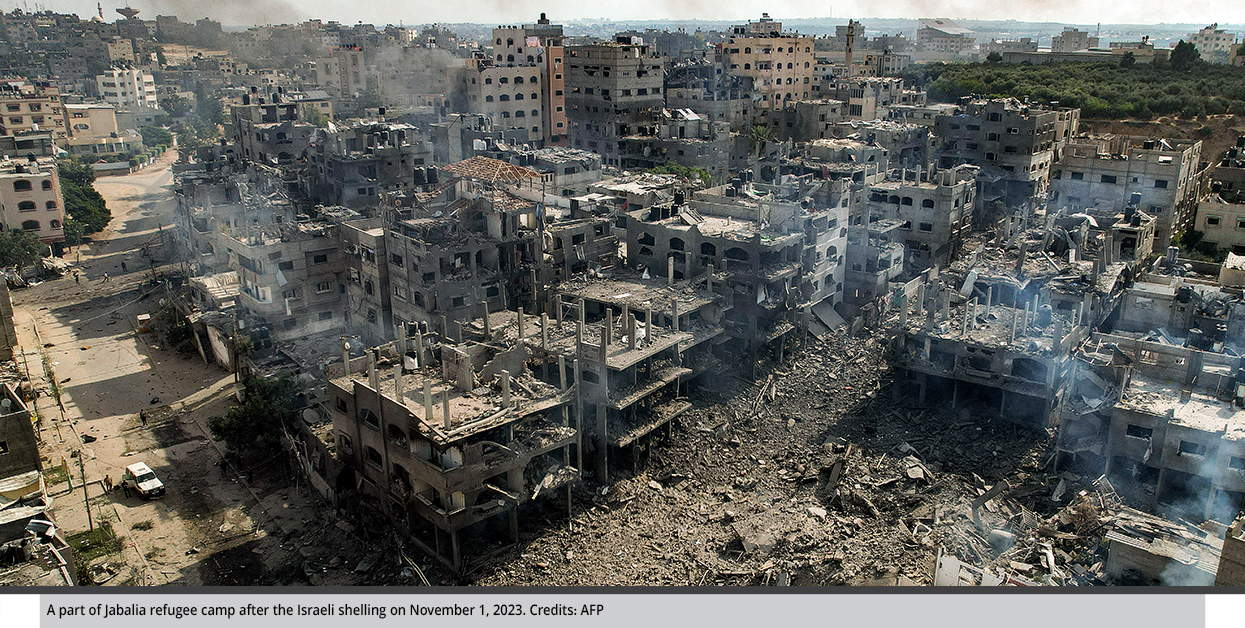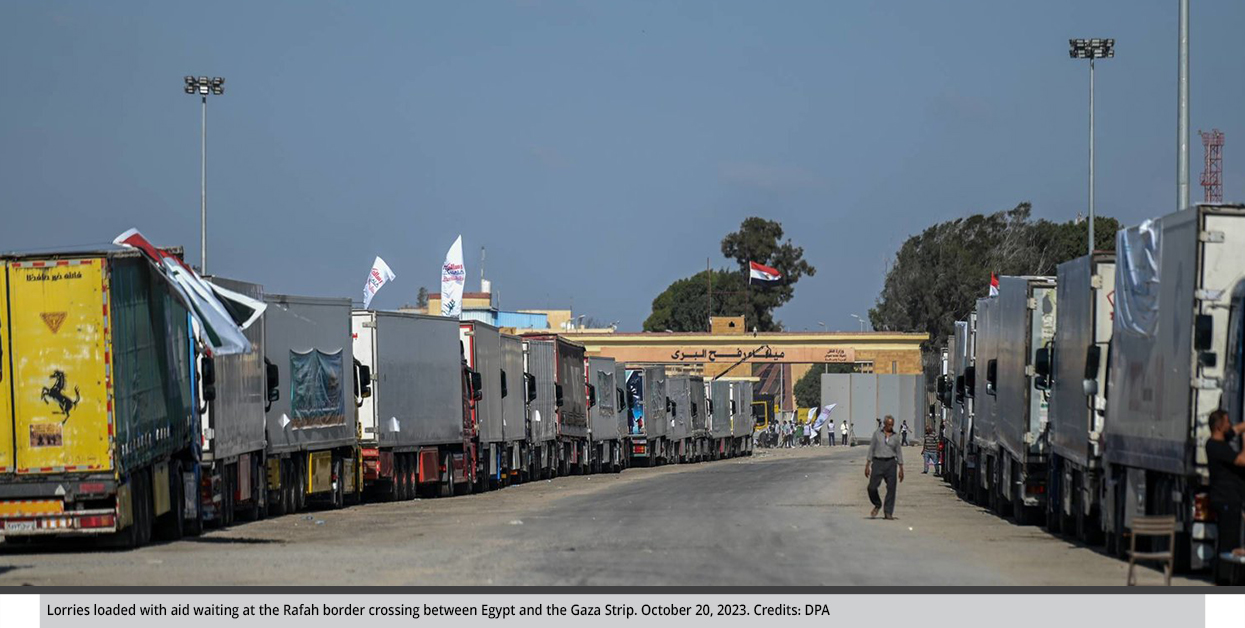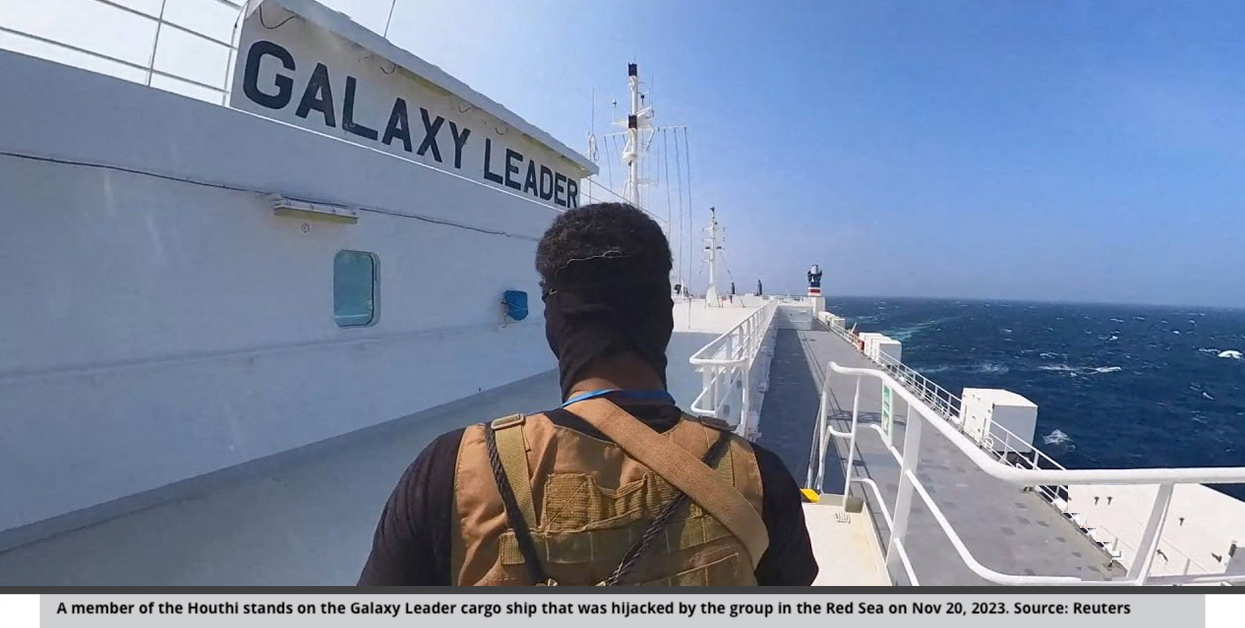How the War on Gaza Changed the Dynamics of Arab Politics Towards the Region?
This analysis discusses the transformations imposed by the war on Gaza that may affect Arab policies towards the region in terms of alliances, and the impacts of such alliances on the path to reconciliation and peace, as well as the impacts on views, priorities, and regional perceptions that alter the region’s future.
by Abdulmalik Hussein Amer
- Release Date – Nov 28, 2023

Starting from 2020, the region witnessed the spread of a new culture towards peace that included new Arab-Israeli agreements; restoring Saudi-Iranian relations that guaranteed calm in the arenas of competition in Yemen, Iraq, and Syria; an Arab-Turkish convergence; and an Arab-Syrian convergence. Overall, the prevailing tendency in the region was heading towards peace initiatives and regional partnerships, sometimes though integration with international geopolitics.
The situation remained this way until October 7, which affected both Arab dynamics in the Middle East and its foreign policy priorities. The Arab states found themselves in the midst of clear divergences between their positions and the American position that supported the war. Another divergence was between the Arab states’ political approach and the Iranian behavior that supported military movements, whether in the major war in the Gaza Strip or the secondary wars across the region. These are the circumstances that brought to mind what the region experienced during the decade that ensued after what is known as the Arab Spring: conflicts, disputes, wide gaps between the states of the region, and a clash of interests and goals.
A New Chapter of Relations with Israel
Many of the active diplomatic moves the region has witnessed since 2020 were based on the belief that the Palestinian cause no longer holds great importance and that the region states should consolidate their influence, enhance their interests, and support their economic ambitions through the frameworks of peace and reconciliation. However, the war on Gaza rearranged the priorities concerning the Palestinian cause, not only at the regional level but also at the internationally level.
The war on Gaza has proven that the most serious threat to the security of the region comes from the Israeli-Palestinian conflict. Despite this conflict there is an interior threat within the scope of Palestine and Israel that significantly affects security and stability. By flaring up tensions and conflicts in the region, Israel’s war on Gaza brought the Palestinian cause back to the forefront of priorities, especially for the United States, which has unprecedentedly mobilized its naval and air forces in the Eastern Mediterranean and the Red Sea to prevent the war from spreading to other fronts.
However, while Israel is planning to stop the series of attacks coming from the Gaza Strip and the West Bank through measures that give Israel the ability to supervise security in the two regions, these measures did not provide real conditions for establishing peace. All they did was exacerbate the suffering of the Palestinian people.
These measures may be met with Palestinian steps of escalation, especially as Israel is aiming to eradicate Hamas and is no longer convinced about the usefulness of the Palestinian Authority. With these steps, Israel is undermining any hope for the Palestinians to have a political entity that represents them, effectively eliminating the two-state solution option.

In the meantime, after showing relative openness in the pre-war period, the Arab public opinion in increasingly rejecting rapprochement and cooperation with Israel. Thus, the Arabs no longer view Israel as one of the states of the region; instead, Israel is deemed to be a new occupying state similar to what it was after 1948 and 1967, especially if the Israeli army occupies the Gaza Strip. These circumstances complicate the considerations of the Arab states towards their rapprochement and cooperation with Israel.
New Divergence in Arab-U.S. Priorities and Considerations
The American strategy in the Middle East relied on de-escalation in order to maintain its increasing focus on the East Asia and China axis. This strategy worked on correlating the regional and international geopolitical situation, an example of which is the India-Middle-East Economic Corridor that aims to bolster development between Asia, the Persian Gulf, and Europe. From the standpoint of de-escalation, Washington—contrary to its wish—supported the Arab steps towards rapprochement with Syria while the administration enhanced the steps of Arab-Arab or Arab-regional rapprochement.
Nevertheless, the war on Gaza created fundamental changes in several aspects of the United States foreign policy. The first is returning to the practice of traditional security policies that support Israel politically and militarily, a position the United States did not take for its other allies in the region despite the relative similarity of geopolitical importance. The second is that Washington took a unilateral approach in the war on Gaza, contrary to its previous stance of calling for diplomatic plurality. This approach is also different from its position in previous escalation rounds, which were mostly managed according to the perceptions of multiple parties, especially Egypt, Jordan, and Qatar.
In the current war, the United States took part only in bilateral coordination with Israel, while the broad joint coordination continued only for secondary issues, such as allowing humanitarian aid to enter Gaza or participating in negotiations to release hostages.

The United States unilateral approach was clear in its pressure during the early days of the war to accept refugees from the Gaza Strip into Egypt’s Sinai Peninsula, which Cairo and Amman viewed as displacement by emptying Gaza of its inhabitants. Later, the United States proposed a political entity for administrating the Gaza Strip, though there was no consent by the Arab states to discuss this before the cessation of the war. Once again, the Arab states found themselves forced to deal with U.S. agendas that not only do not meet their interests and aspirations but pose a threat to them.
In fact, the United States’ approach will have a negative impact on its reputation as a neutral mediator in the Palestinian cause and, more broadly, on the behavior, alliances, and relations of the region states. The war on Gaza did not only hinder new peace agreements between Saudi Arabia and Israel, but it also undermined Washington’s efforts to establish Arab-Israeli security cooperation, pushing the Arab states neighboring Israel (i.e., Jordan and Egypt) to reconsider their relations with Israel. Cairo firmly rejected displacing the people of Gaza into Sinai, as the Israeli plans were a major concern for Egypt and a threat to its national security. Meanwhile, Jordan requested the Israeli ambassador in Amman to depart, then summoned its own ambassador in Tel Aviv to return home until the war on Gaza comes to an end, declaring that all options, including war, are available.
Widening the Gap between Arabs and the Axis of Resistance
The Arab states immediately shifted from their focus from achieving peace to the war on Gaza. Rather than leading them towards more convergence and common ground, it is clear that the ongoing conflict might lead to a new divergence between the Arabs and the Axis of Resistance, an informal political and military coalition led by Iraq against the West and Israel. While Arab states are seeking to stop the war by employing political solutions, whether through diplomacy or applying complex pressures, Iran views escalating military attacks against the United States and Israeli targets as the way to stop the war. Iran demonstrated a considerable level of escalation, especially after the Houthis hijacked a commercial container ship in the Red Sea, this means that Tehran does not mind dragging the region into a new conflict. Nor does it hesitate from reintroducing the Middle East to the world as a region of conflict or separating itself from the behavior of its allies towards the U. S. forces in Syria and Iraq.
All of this has implications that are not limited to the Arab-Iranian relations; it may also affect Syria and Iraq. Arab countries have converged with Damascus according to the “quid pro quo” principle, the first steps of which are to end the production and smuggling of the narcotic Captagon and create conditions for the return of Syrian refugees to their homeland. However, the war on Gaza is posing new challenges at the security and political levels, including the use of Syrian territory by many armed groups to launch attacks against Israel despite the Syrian government’s great restraint towards the war and its agreement with the Arab countries that political solutions need to be a top priority. Nevertheless, this did not halt Israel from launching retaliatory strikes against Syrian facilities, whether against Damascus and Aleppo airports or Syrian army bases.
Similar to the Syrian situation, the armed Iraqi groups’ attacks on U. S. forces in Iraq and Syria carries the risk of dragging the region into a wider conflict and reflects negatively on the economic feasibility of joint regional projects (especially those held with Egypt and Jordan) primarily for security reasons. Events have shown that official bilateral relations or economic projects will remain affected by the positions of armed groups towards them. This current situation is not new. These groups attempted to target Jordan, whether through demonstrations at the Trebil crossing, their partial obstruction of Iraqi petroleum supplies to Jordan, or the impact on the Jordanian territory via attacks against Israeli targets, not to mention Houthi missiles landing in a remote areas of southern Jordan.
Armed Groups: Paramilitary States in Positions and Procedures
Earlier in 2023, China succeeded in being a guarantor for resuming the Saudi-Iranian relations. After these relations were resumed, the Iranian-supported armed groups were reconsidered. It was believed that they, specifically the Ansar Allah Houthi group, would reduce their military activities in exchange for focusing on local issues, whether in Yemen, Iraq, Syria, or Lebanon. The West saw Ansar Allah as an armed group seeking to gain international recognition as a legitimate force in governance and administration, especially since the group had not caused damage to American or Israeli interests.
However, after the war on Gaza, the Houthis translated their anti-U.S. and anti-Israel rhetoric into action, joining other armed groups in attacks against U.S. and Israeli interests and locations. These actions, taken the Axis of Resistance, within Iran’s strategy known as “Unity of Arenas” have clarified the potential for pre-states armed groups to influence regional peace and stability. Missile attacks were launched from Syria, Lebanon, Yemen, and Iraq, some missiles fell in some Arab countries.

The behavior of such groups involves regional and international risks and threats. The Houthis’ hijacking of an Israeli commercial ship in the Red Sea could endanger the strategic maritime corridors like Bab al-Mandab. This calls for the involvement of new countries in the course of the war on Gaza, especially China, which relies on the seas for its energy supplies. Therefore, these groups do not hesitate to bring the region back to an atmosphere of conflict, which significantly affects the national and joint economic projects of the Arab countries and beyond the region.
All these groups are part of the governance and administration in their countries, this means that it is difficult to satisfy and lure these groups with governance, positions, and settlements. These attempts will not push the armed groups to focus on peace and development, it rather augments their position in the Axis of Resistance and serves Iranian interests. This fact was crystal clear to the United States and Western states, after they exerted their pressure to end the military campaign of the Arab coalition in Yemen and searched for diplomatic solutions to its crisis.
What is more perilous is that these groups are trying to outbid the Arab position, at a time when the Arab peoples find that these groups are taking escalatory and military actions, compromising the official Arab systems that adopts political solutions. In addition, these groups have shown the scale of the risks looming in the Arab states at various political, economic, security, and military levels, whether these risks are from land, sea, or air. The Unity of Arenas strategy should be understood as a threat to all countries in the region. As long as the armed groups applied the Unity of Arenas within a low threshold of conflict with the United States and against one of its closest allies, Israel, then it is likely that these groups will practice their strategy against other states in the future.
Finally, the war on Gaza has brought about several transformations in diplomacy, threats, and priorities. It is likely that this war to undermine the dynamics that the Arab countries have worked on during the previous periods, especially regarding the wishes for peace and focus on economic affairs, in exchange for neutralizing political issues, especially the complex ones. However, these issues still present and able to change regional paths. On the other hand, the Arab steps were supported by serious intentions towards peace, but they are hindered by a regional reality that is still afflicted with hotspots of conflict, where armed groups spread actively and influentially in the context and tracks of the region.

Abdulmalik Hussein Amer
Researcher in Middle East affairs
 العربية
العربية